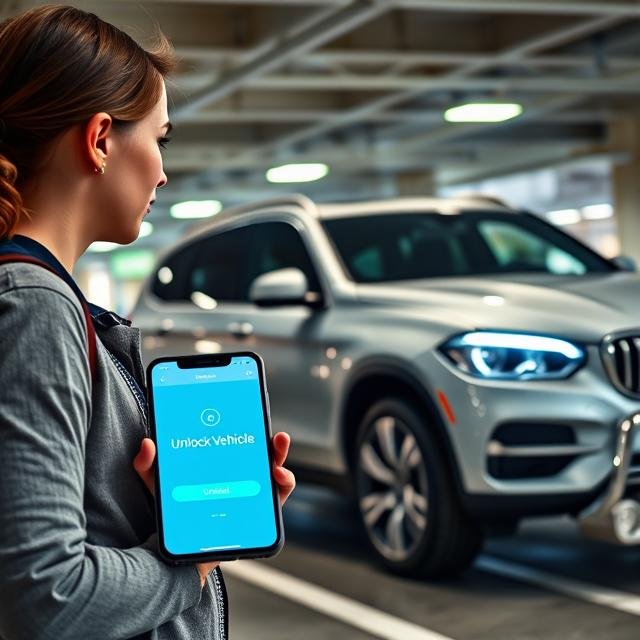In an era defined by on-demand services and digital convenience, the way we access transportation is continually evolving. Among the various models available, the term “autohire car rental” has emerged as a significant concept, representing a shift towards more streamlined and user-centric vehicle access. But what exactly does it mean, and how does it differ from traditional car rental? This article delves into the world of autohire, exploring its mechanisms, benefits, considerations, and what modern consumers should know.
Table of Contents
Defining Autohire Car Rental
At its core, autohire car rental refers to a rental model where the process of booking, accessing, and managing a rental vehicle is heavily automated and often self-service. The “auto” in autohire doesn’t refer to the car itself but to the automation of the rental process. This model leverages technology—primarily websites, mobile apps, and kiosks—to minimize human interaction and paperwork, creating a faster, more efficient experience from reservation to return.
While the term is sometimes used interchangeably with traditional rental, its distinguishing feature is the emphasis on a seamless, digital-first journey. It’s the difference between queuing at a counter with a printed reservation and simply walking up to a designated car in a lot, unlocking it with your phone, and driving away.
How the Autohire Process Works: A Step-by-Step Look
The autohire experience is designed for simplicity and speed. While specifics can vary by company, the general workflow is consistent.
- Digital Reservation: The entire process begins online or through a mobile application. The user selects their vehicle type, rental dates, pickup/drop-off locations, and any additional extras (like GPS or child seats). Payment information is typically entered at this stage to secure the booking.
- Pre-Arrival Verification: To expedite the pickup, the rental company’s system often verifies the customer’s driver’s license, payment method, and other necessary details digitally in advance. This might involve uploading photos of your license and credit card through a secure portal.
- Keyless Access & Automated Pickup: This is the hallmark of a true autohire system. Upon arrival at the rental location, the customer does not need to go to a counter. Instead, they receive instructions via email or app notification directing them to their specific vehicle. The car is unlocked using a code entered into a keypad on the window, through the company’s mobile app, or via a digital key card retrieved from an automated kiosk.
- The Rental Period: The vehicle is used as agreed. Many autohire providers equip their fleets with telematics systems (GPS) that allow for features like easy location of the vehicle upon return, and in some cases, provide driving data for usage-based insurance or fuel tracking.
- Automated Return: The return process is equally streamlined. The customer returns the vehicle to the designated area, ensures their personal belongings are removed, and follows simple instructions to lock the car and drop the keys in a secure drop-box or finalize the rental in the app. The final receipt and any additional charges are processed automatically and emailed to the customer.
The Advantages of Choosing an Autohire Service
The rising popularity of the autohire model is driven by several compelling benefits:
- Time Efficiency: Eliminating lines and paperwork at the rental counter saves a significant amount of time, which is especially valuable for business travelers or those on a tight schedule.
- Convenience and Flexibility: The ability to handle the entire process from a smartphone offers unparalleled convenience. Pickup and return can often occur outside of standard office hours.
- Reduced Human Interaction: For travelers who prefer a self-directed experience or are renting during odd hours, the minimal need for face-to-face interaction is a major plus.
- Transparency: Digital agreements and automated billing can reduce errors and make the cost breakdown clearer, as everything is documented electronically.
- Contactless Experience: In a post-pandemic world, the reduced contact inherent in the autohire process remains a significant draw for health-conscious consumers.
Important Considerations and Potential Drawbacks
While convenient, the autohire model is not without its considerations. Potential renters should be aware of the following:
- Limited Personal Assistance: If you have a complex question, need to change your reservation details last minute, or encounter a problem with the vehicle, the lack of an immediate staff presence can be a challenge. Customer service is typically handled via phone or chat.
- Scrutinize the Agreement: The ease of clicking “I Agree” online means it’s crucial to read the rental terms and conditions carefully. Understand the fuel policy, mileage limits, and insurance coverage before confirming your booking.
- Vehicle Inspection: The responsibility for noting any pre-existing damage to the vehicle falls more heavily on the renter. You must thoroughly inspect the car and report any issues through the app or via a designated process before driving off to avoid being held responsible later.
- Technology Reliance: The entire process depends on a functioning smartphone, stable internet connection, and your comfort with using technology. A dead phone battery or app glitch could complicate pickup.
Autohire vs. Traditional Rental vs. Carsharing
It’s helpful to place autohire in context with other vehicle access models:
- Traditional Rental: Involves renting from a branded counter at an airport or dedicated location, with staff-assisted check-in/check-out, for periods typically ranging from a day to weeks.
- Autohire: A subset of traditional rental focused on automating the traditional process for standard rental periods (daily, weekly).
- Carsharing (e.g., Zipcar, Turo): Provides very short-term, on-demand access (by the hour or minute) to vehicles parked in urban areas, primarily for local use. Autohire is generally for longer durations and more formal rental structures.
Who is Autohire Best For?
The autohire model is ideally suited for:
- Tech-savvy travelers comfortable with mobile apps.
- Business travelers seeking a fast, efficient in-and-out experience.
- Anyone who values time and convenience over in-person service.
- Travelers renting during hours when rental counters might be closed.
It might be less ideal for:
- Those unfamiliar with rental agreements who need thorough explanations.
- Renters requiring specific vehicle modifications or have complex rental needs.
- Individuals who are not comfortable using smartphones for transactional processes.
Frequently Asked Questions (FAQ)
Q: Is “autohire” just a fancy name for a standard online booking?
A: Not quite. While all autohire bookings are made online, the key differentiator is the automated, self-service pickup and return process. A standard online booking might still require you to wait in line at a counter to finalize paperwork and get keys.
Q: Do I still need insurance when using an autohire service?
A: Yes, insurance is a critical component. Autohire companies offer standard Collision Damage Waivers (CDW) and liability insurance. You can typically accept their coverage, use a credit card that provides primary rental insurance, or rely on your personal auto policy if it covers rentals. Always verify your coverage before declining the rental company’s insurance.
Q: What happens if I get into an accident with an autohire car?
A: The procedure is similar to a traditional rental. You must immediately contact the rental company’s emergency line (provided in your rental agreement and often within the app) and follow their instructions. This will involve documenting the scene, filing a police report if necessary, and providing all relevant information to the company.
Q: How is the fuel policy handled in an autohire rental?
A: The most common policy is “full-to-full,” meaning you receive the car with a full tank and are expected to return it full. The company may use the vehicle’s onboard telematics to monitor fuel levels. Failure to return the car full will result in refueling charges at a premium rate.
Q: Can I extend my rental period through the app?
A: Most autohire platforms offer this functionality. You can usually request an extension through the app or website, subject to vehicle availability. The rental agreement will be updated, and your payment method will be charged for the additional time and any rate changes.

